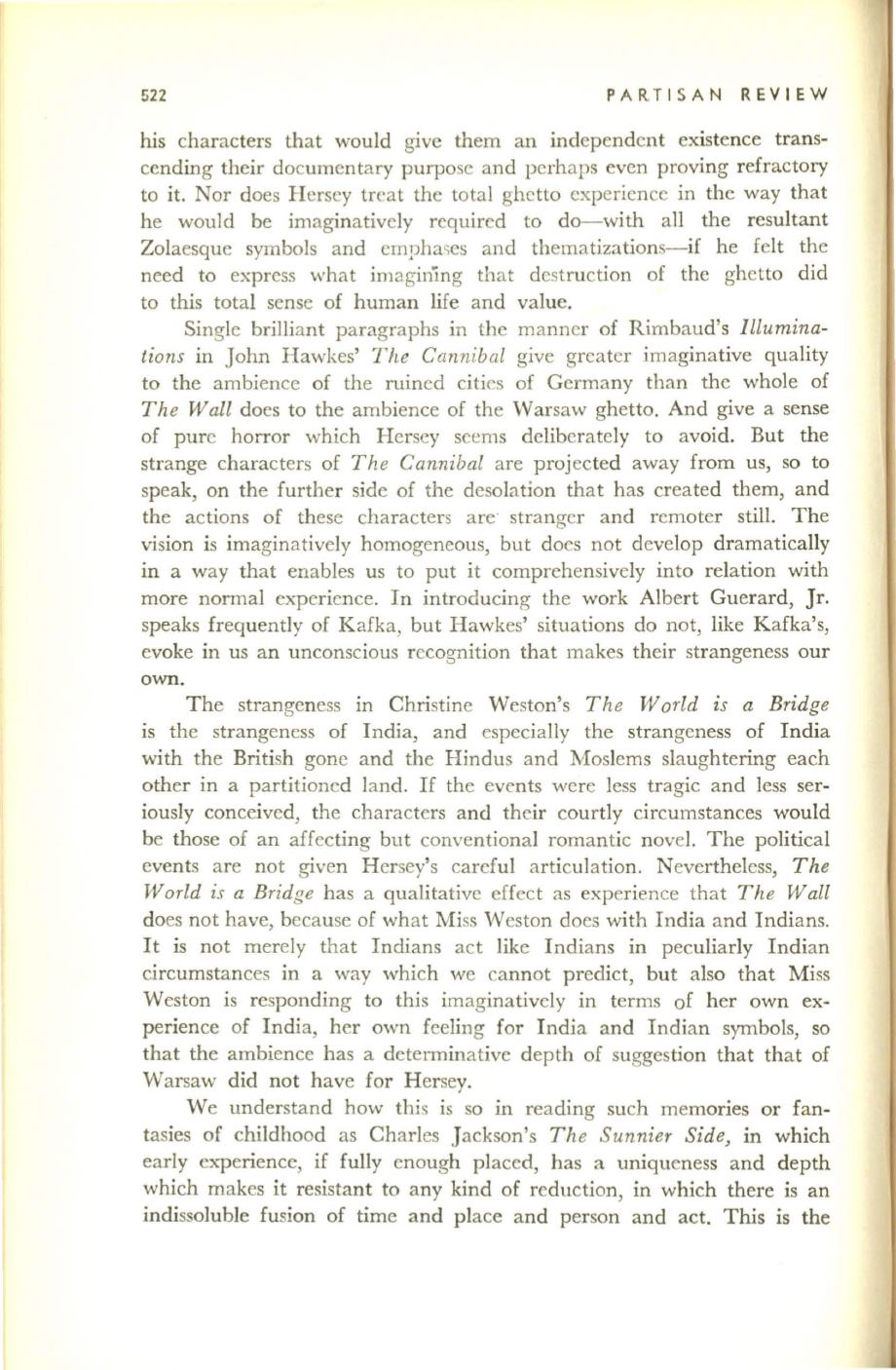
522
PARTISAN REVIEW
his characters that would give them an independent existence trans–
cending their documentary purpose and perhaps even proving refractory
to it. Nor does Hersey treat the total ghetto experience in the way that
he would be imaginatively required to do-with all the resultant
Zolaesque symbols and emphases and thematizations-if he felt the
need to express what imaginIng that destruction of the ghetto did
to this total sense of human life and value.
Single brilliant paragraphs in the manner of Rimbaud's
Illumina–
tions
in John Hawkes'
The Cannibal
give greater imaginative quality
to the ambience of the ruined cities of Germany than the whole of
The Wall
does to the ambience of the Warsaw ghetto. And give a sense
of pure horror which Hersey seems deliberately to avoid. But the
strange characters of
The Cannibal
are projected away from us, so to
speak, on the further side of the desolation that has created them, and
the actions of these characters arc· stranger and rcmoter still. The
vision is imaginatively homogeneous, but does not develop dramatically
in a way that enables us to put it comprehensively into relation with
more normal experience. In introducing the work Albert Guerard, Jr.
speaks frequently of Kafka, but Hawkes' situations do not, like Kafka's,
evoke in us an unconscious recognition that makes their strangeness our
own.
The strangeness in Christine Weston's
The World is a Bridge
is the strangeness of India, and especially the strangeness of India
with the British gone and the Hindus and Moslems slaughtering each
other in a partitioned land.
If
the events were less tragic and less ser–
iously conceived, the characters and their courtly circumstances would
be those of an affecting but conventional romantic novel. The political
events are not given Hersey's careful articulation. Nevertheless,
The
World is a Bridge
has a qualitative effect as experience that
The Wall
does not have, because of what Miss Weston does with India and Indians.
It is not merely that Indians act like Indians in peculiarly Indian
circumstances in a way which we cannot predict, but also that Miss
Weston is responding to this imaginatively in terms of her own ex–
perience of India, her own feeling for India and Indian symbols, so
that the ambience has a determinative depth of suggestion that that of
Warsaw did not have for Hersey.
We understand how this is so in reading such memories or fan–
tasies of childhood as Charles Jackson's
The Sunnier Side,
in which
early experience, if fully enough placed, has a uniqueness and depth
which makes it resistant to any kind of reduction, in which there is an
indissoluble fusion of time and place and person and act. This is the


